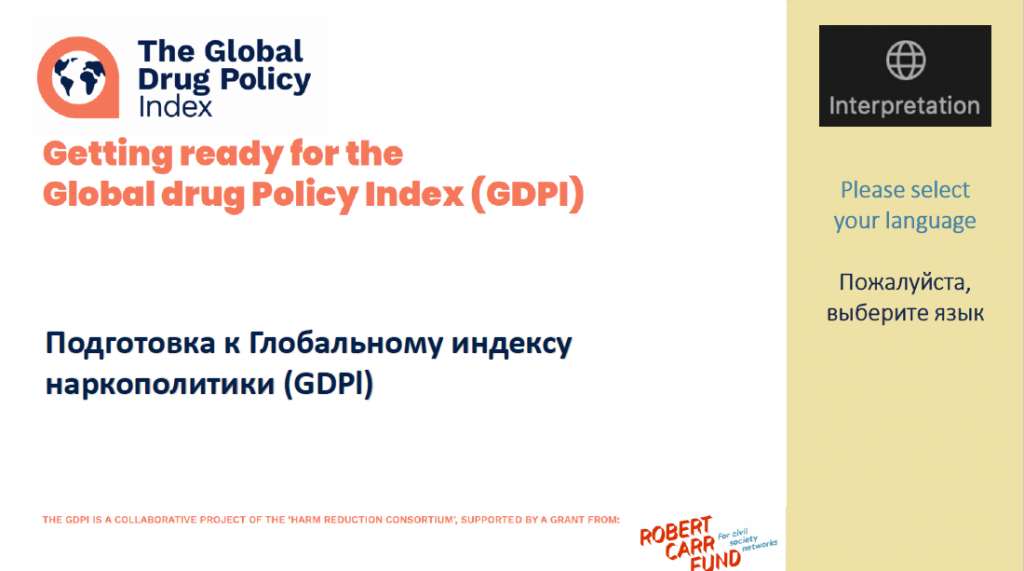The results of the Global Drug Policy Index 2021, including its companion analytical report and real-life stories of individuals’ experiences with drug policies from across the globe, are available through an interactive web-tool accessible through this link: globaldrugpolicyindex.net
The Global Drug Policy Index is a project of the Harm Reduction Consortium, which includes the following partners: the European Network of People Who Use Drugs (EuroNPUD), the Eurasian Harm Reduction Association (EHRA), the Eurasian Network of People who Use Drugs (ENPUD), the Global Drug Policy Observatory (GDPO) / Swansea University, Harm Reduction International (HRI), the International Drug Policy Consortium (IDPC), the Middle East and North Africa Harm Reduction Association (MENAHRA), the West African Drug Policy Network (WADPN), the Women and Harm Reduction International Network (WHRIN), and Youth RISE.
The Global Drug Policy Index (GDPI) is an exciting new project supported by the Robert Carr Fund, and led by a Consortium of organisations from around the world.[1]
GDPI is a new composite index that documents, measures and compares national government policies related to illicit drugs – providing each country with a score or ranking to show how much their drug policies compare to the UN Common Position on Drugs.[2] This includes collecting data across five dimensions – use of extreme sentencing and responses, proportionality of criminal justice response, health and harm reduction, the availability of controlled medicines, and (where relevant) development – while also exploring key issues such as civil society engagement, decriminalisation, proportionality of sentencing, and funding for harm reduction. The GDPI tracks both policies and their implementation.
For the first GDPI launch and dataset in September, we are focusing on around 30 countries from every region of the world (we aim to cover more and more countries in future years, but this is the most we can include at this stage). There are more than 50 indicators in total – and as much of the data collection and coding as possible is being done centrally at Swansea University (UK). But in each country, we have also identified the most important country partners to help with data collection as well as the launch and follow-up.
Project includes the following activities:
- Data coding
- Online survey
- Preparedness workshops
- Local advocacy actions
Eurasian Harm Reduction Association (EHRA) together with the Eurasian Network of People who Use Drugs (ENPUD) organized a preparedness workshop in EECA region.
Videos and presentation from the workshop, please, see below.
[1] Lead: International Drug Policy Consortium (IDPC). Partners: Harm Reduction International (HRI); Youth RISE; Women and Harm Reduction International Network (WHRIN); Middle East and North Africa Harm Reduction Association (MENAHRA); European Network of People who Use Drugs (EuroNPUD); The Global Drug Policy Observatory, Swansea University (GDPO); Eurasian Network of People who Use Drugs (ENPUD); Eurasian Harm Reduction Association (EHRA)*; West Africa Drug Policy Network (WADPN).
*Non-financial partner.
[2] More specifically, the Index will assess how drug policies align with the recommendations included in the 2019 report from the UN System Coordination Task Team on the Implementation of the UN System Common Position on Drug-Related Matters, entitled What we have learned over the last ten years: A summary of knowledge acquired and produced by the UN system on drug-related matters: https://unodc.org/documents/commissions/CND/CND_Sessions/CND_62/ECN72019_CRP10_V1901490.pdf

